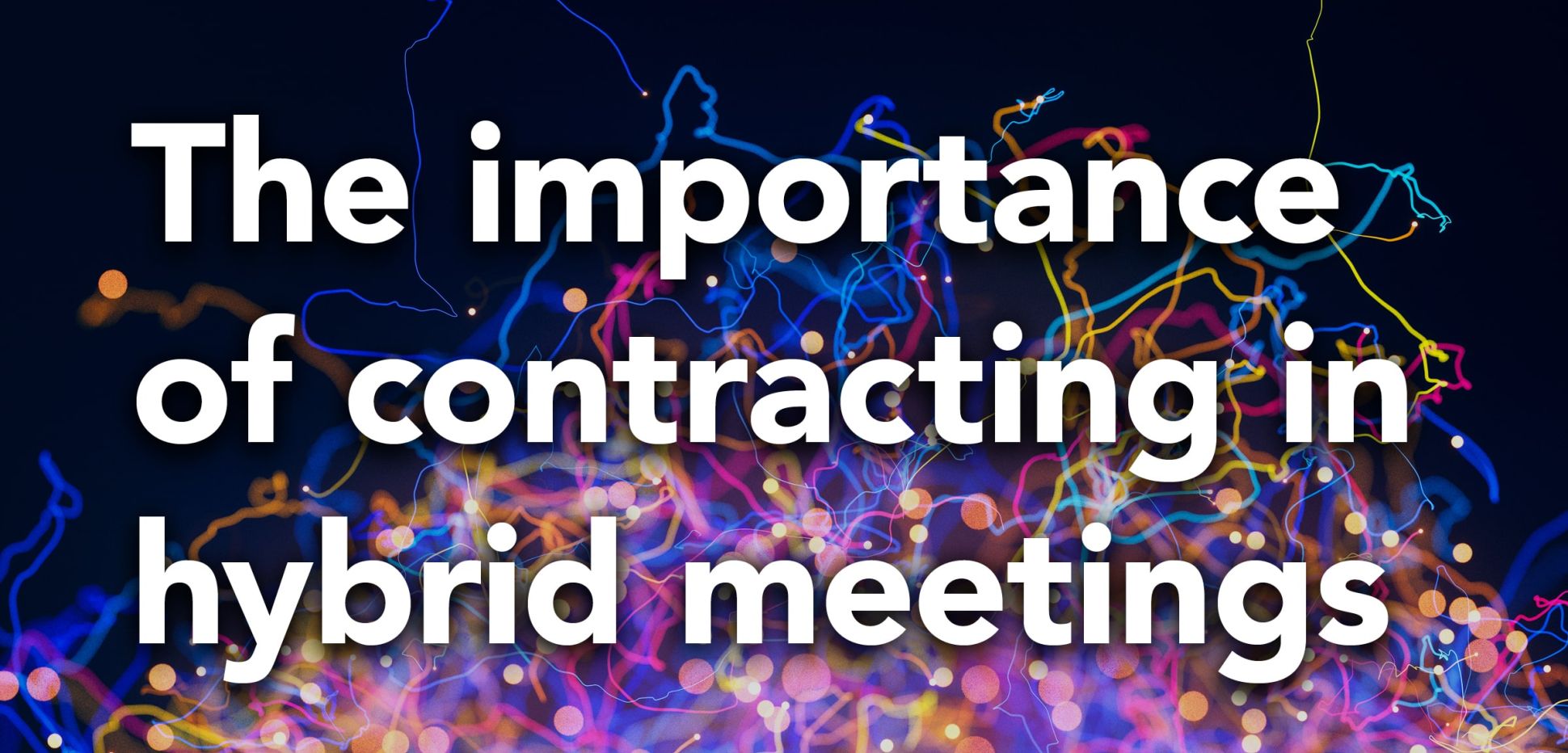Valuable and engaging hybrid meetings

The hybrid meeting often poses an interesting challenge for many leaders and teams. How do you create an equivalence of experience for all those present virtually and physically? How do you ensure that everyone has a voice, no matter whether they are present in the office or present online? And how do you ensure psychological safety even in a half hour meeting?
In many ways, a hybrid meeting brings all the challenges of hybrid working into sharp focus.
As no team is the same, no hybrid meeting is the same. And what works in one meeting might not work in another. The context, the dynamics, the diversity of people – so we must remember to flex to meet the needs of the community. This takes preparation as much as facilitation of the session itself.
Hybrid can be exhausting, trying to marry the two worlds and meet the needs of both sides. Keep duration of meetings and activities in mind and as ever was, contracting is key. What we’ve learnt in our own hybrid meetings and in facilitating hybrid meetings for clients is to be intentional about contracting with your team to ensure inclusion, equivalence of experience and a safe space for discussion:
- Contract with meeting participants on the how and why of the meeting. Start with your core desired outcome / purpose of the meeting and hold that as your ‘North Star'
- Be clear on timing and how all are able (and expected) to participate. And remain true to what you want your participants to achieve and experience
- Contract up front for the hybrid experience – ask how all of your people can be – and feel – included. Don’t discount the importance of simple connection! As 2022 rolls along, some participants still won’t have seen each other for eons – plan for this time and, depending, privilege it over the content
- During the actual meeting, make it clear that it may feel bumpy, but there will be a conscious effort to maximise inclusion. And things may have to be changed on-the-fly to make sure the experience remains (as close to possible) the same for everyone
There are many aspects to be considered for a hybrid meeting – from utlising multiple facilitators to sending out pre-meeting communications, to leveraging technology, to clarifying and being purposeful with actions, who’s in the room and who’s online.
Yet all of this goes back to contracting. This is not about over-formalising the meeting, but creating the foundation to avoid conflicts and confusion. It can set the tone for the meeting and make it easier to renegotiate and adapt along the way.
Curious to learn more? Read about our approach to Blended Learning.

 Deborah Gray
Deborah Gray 
 Aoife Keane
Aoife Keane 
